What are the purposes and benefits of buffing and polishing in DIY and plastic modeling? 5 useful uses of abrasives

This issue is a must-see for those who do major cleaning during long vacations such as Obon and New Year holidays.
When it comes to cleaning, detergent, sponges and rags, the cleaning all-stars come into play!
This year, we would like to add "abrasives" to our standard product lineup!
Abrasives may give a strong impression of DIY and other manufacturing activities.
However, abrasives are actually one of the hidden all-purpose cleaning products.
In this special year-end issue, we would like to share with you some unexpected uses of abrasives related to cleaning.
Table of Contents
1. How to clean with abrasives - try to remove water stains from a ceramic washbasin!
2. How to clean with abrasive materials - remove burnt on induction stove by polishing!
3. How to clean with abrasive materials - Try to revive diatomaceous earth mats that have lost their water absorbency!
4. How to clean with abrasives - Let's clean tanned old books!
5. How to clean with abrasives - Take care of leather shoes that show minor scratches!
6. Summary - Abrasive is a versatile product that can be used for cleaning.
1. How to clean with abrasives - try to remove water stains from a ceramic washbasin!
【degree of difficulty★★☆☆☆】
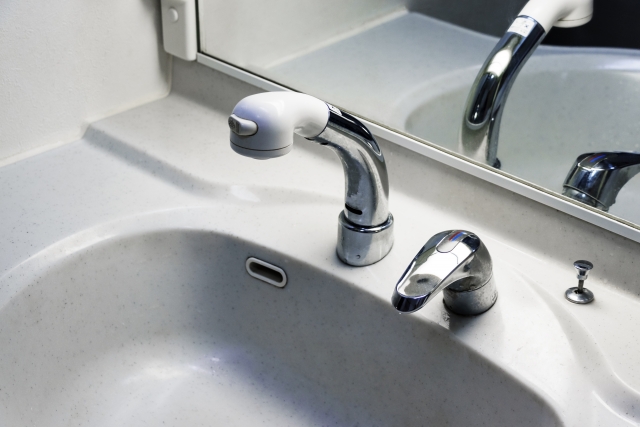
Washstands used daily are prone to stains caused by moisture and soap.
Many people may be able to prevent mold with routine cleaning, but they may not be able to remove water stains.
Water stains can be difficult to remove as they accumulate, so it is important to clean them before they become noticeably dirty.
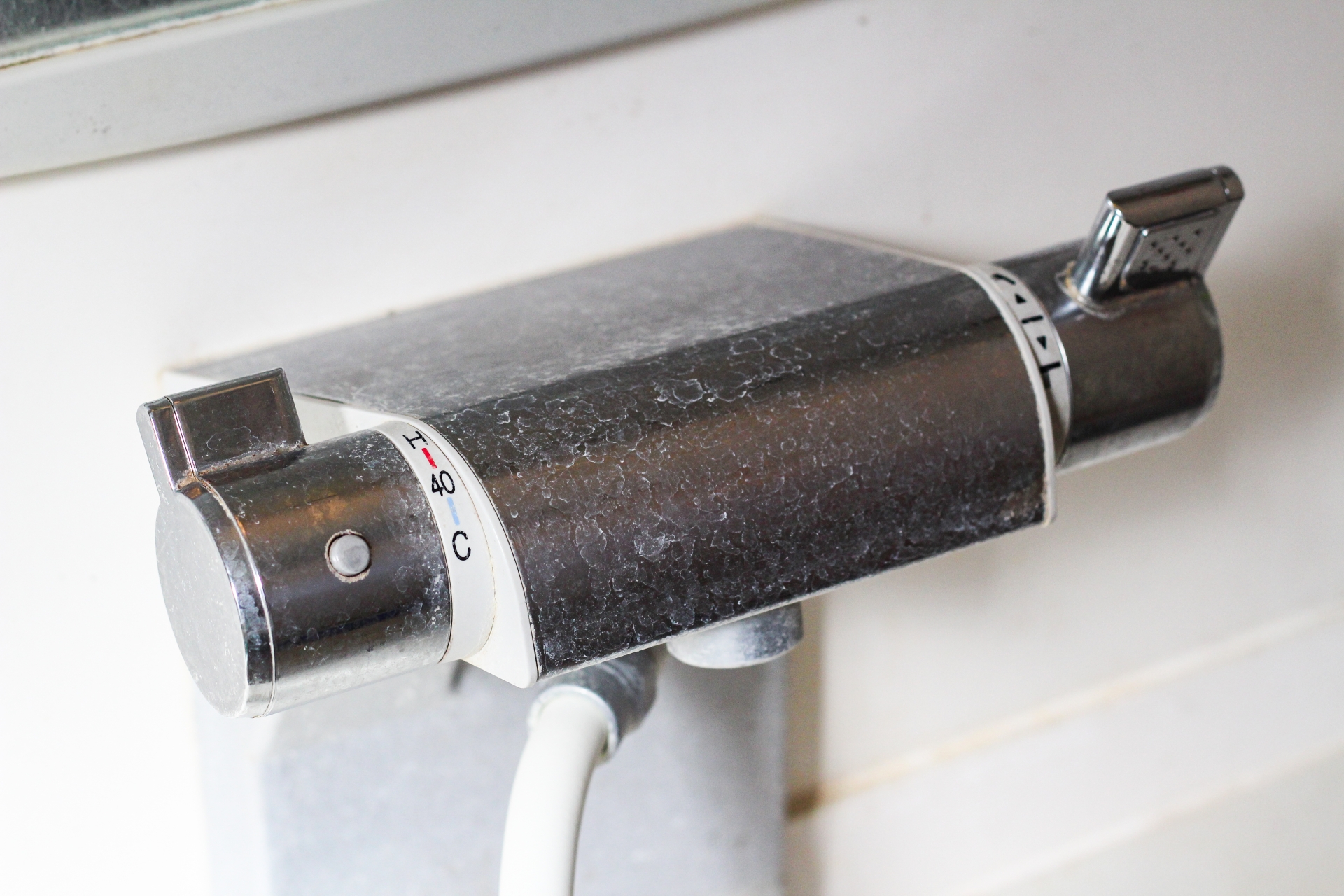
Stubborn water stains on ceramics; water-resistant abrasive paper is recommended for this area among abrasive materials.
~What to prepare~
・Water-resistant abrasive paper #2000
・Scissors
・Dry rag
Recommended Products: Water Resistant Abrasive Paper (Sankyo Rikagaku)
Sankyo Rikagaku's abrasive product "Water Resistant Abrasive Paper" best suited for removing stubborn water stains
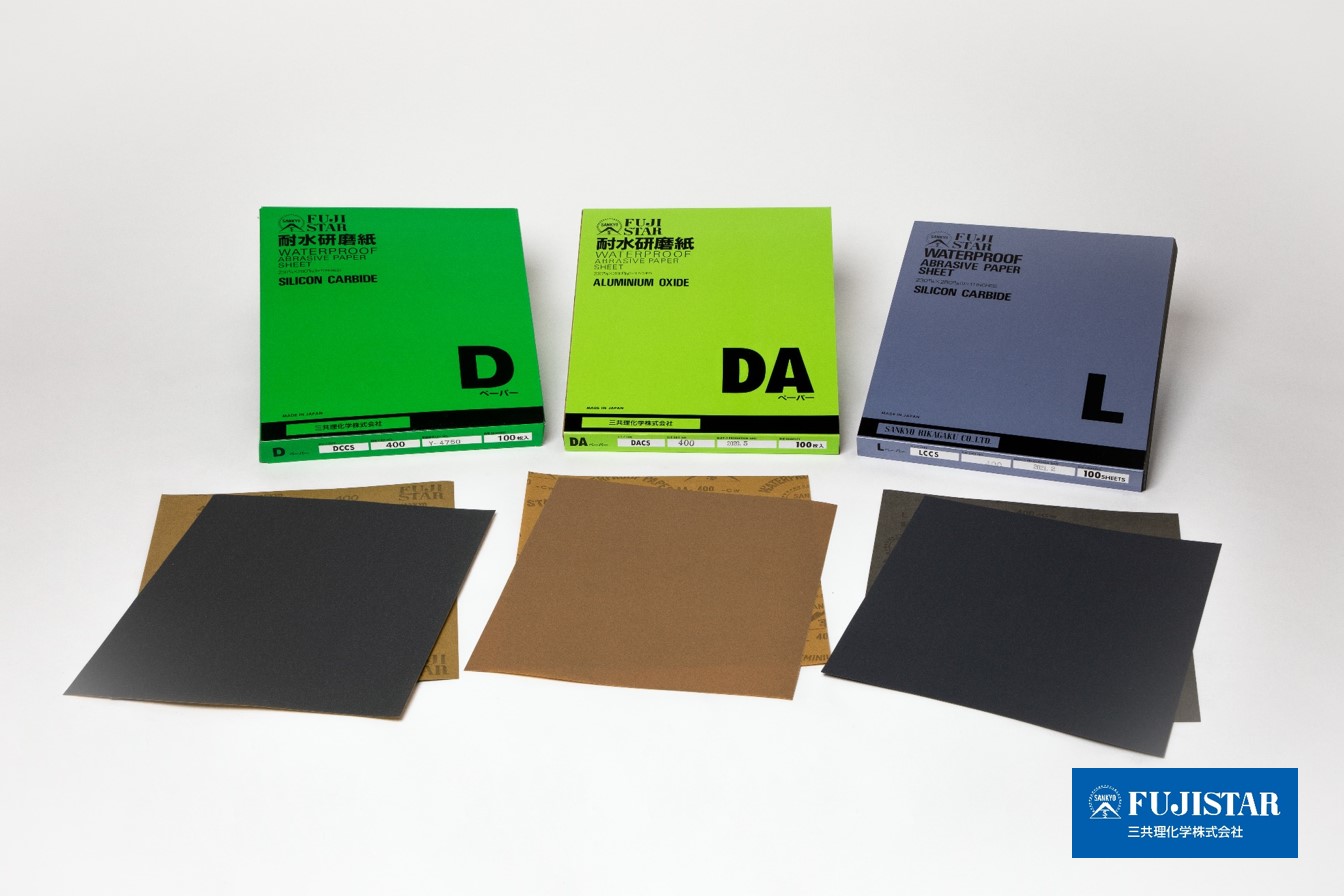
Cut the water-resistant abrasive paper with scissors to a convenient size.
It is a simple process of wetting the abrasive with water and polishing the water stain area with light force.
Finally, a quick wipe down of the wet area with a dry rag will transform the area into a shiny new water closet!
Sankyo Rikagaku has a wide lineup of water-resistant abrasive paper from #60 to #2000, though,
For water cleaning, we recommend the finest #2000.
You can use #2000 water-resistant polishing paper to polish both the ceramic parts of the vanity and the hardware.
Furthermore, the water-resistant abrasive paper is specially treated with paper so that it is safe even when wet!
It is durable and tear-resistant, so one piece can be used for a long time.
You can cut and use only the amount you need, so you don't have to worry about excess.
Since it is sandpaper, it can of course be used for DIY, etc. (paint coating, woodworking).
2. How to clean with abrasive materials - remove burnt on induction stove by polishing!
【degree of difficulty★★☆☆☆】
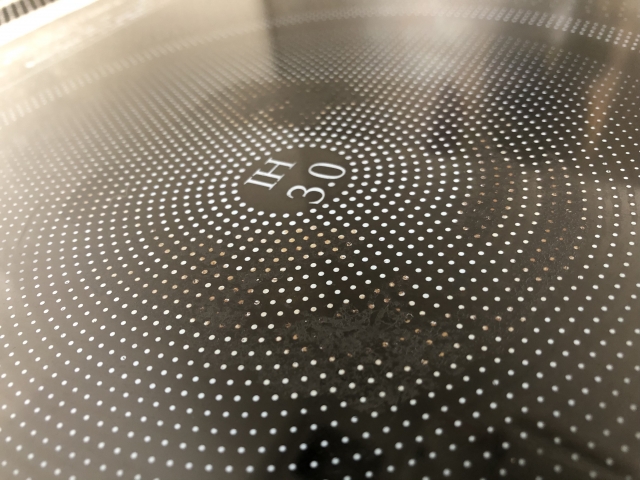
Induction stoves have been touted as being flatter and easier to clean than gas stoves, but after years of use, they can become greasy and burnt. ...... It is true that the flat surface is easy to wipe clean, but it is impossible to take care of burnt-on stains during daily cleaning.
In fact, these stains can be easily removed with cleanser and aluminum foil.
~What to prepare~
・Cleanser
・Aluminum foil
・Wet rags
・Dry rag
Turn off the induction stove and begin working when it reaches room temperature.
Dab a small amount of cleanser and polish with rolled aluminum foil (about 15 cm).
In fact, the cleanser contains microscopic abrasives, and these particles remove dirt.
When the stain is removed, wipe with a clean cloth to remove the cleanser.
Finally, wipe up any remaining water with a dry cloth to complete the process.
In fact, along with cleansers, toothpaste also contains fine abrasive particles.
Abrasives are much more familiar to us than we imagine.
3. How to clean with abrasive materials - Try to revive diatomaceous earth mats that have lost their water absorbency!
【degree of difficulty★★★☆☆】
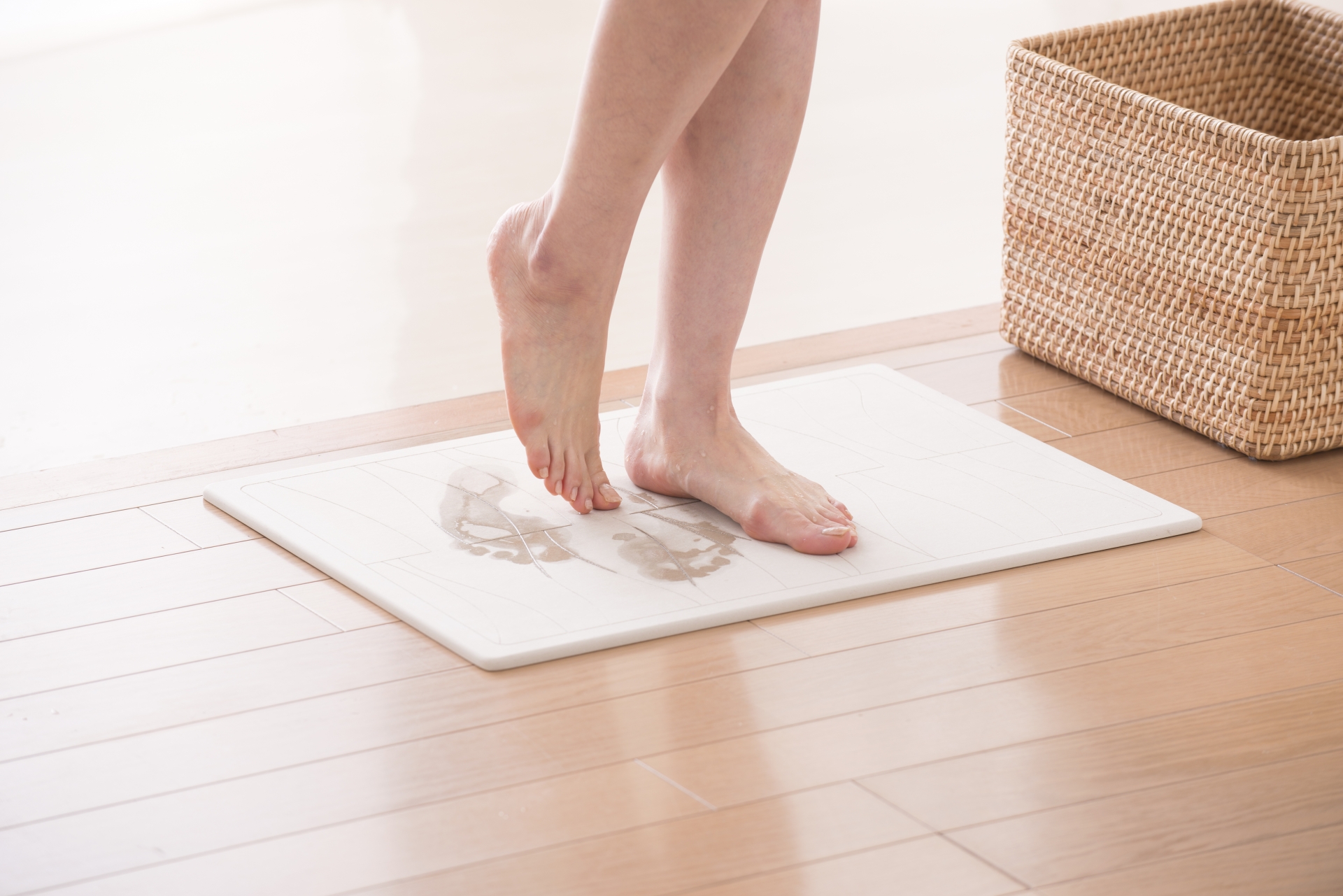
Many people may be fond of diatomaceous earth bath mats, which dry quickly and are always dry.
Its greatest feature is its high water absorbency, but after many years of use, its water absorbency may decrease.
In such cases, abrasives come into play.
After years of use, dirt such as sebum and dust adhere to the surface, preventing it from absorbing water, which is the cause of reduced water absorbency.
By removing this dirt through polishing, it is possible to restore water absorption.
~What to prepare~
・Dry abrasive paper #400 or #320
・scissors
・brush
・Dry rag
Recommended Products: Dry abrasive paper (Sankyo Rikagaku)
If you are not sure about waterless polishing, this is the product for you! Sankyo Rikagaku's polishing product dry Abrasive Paper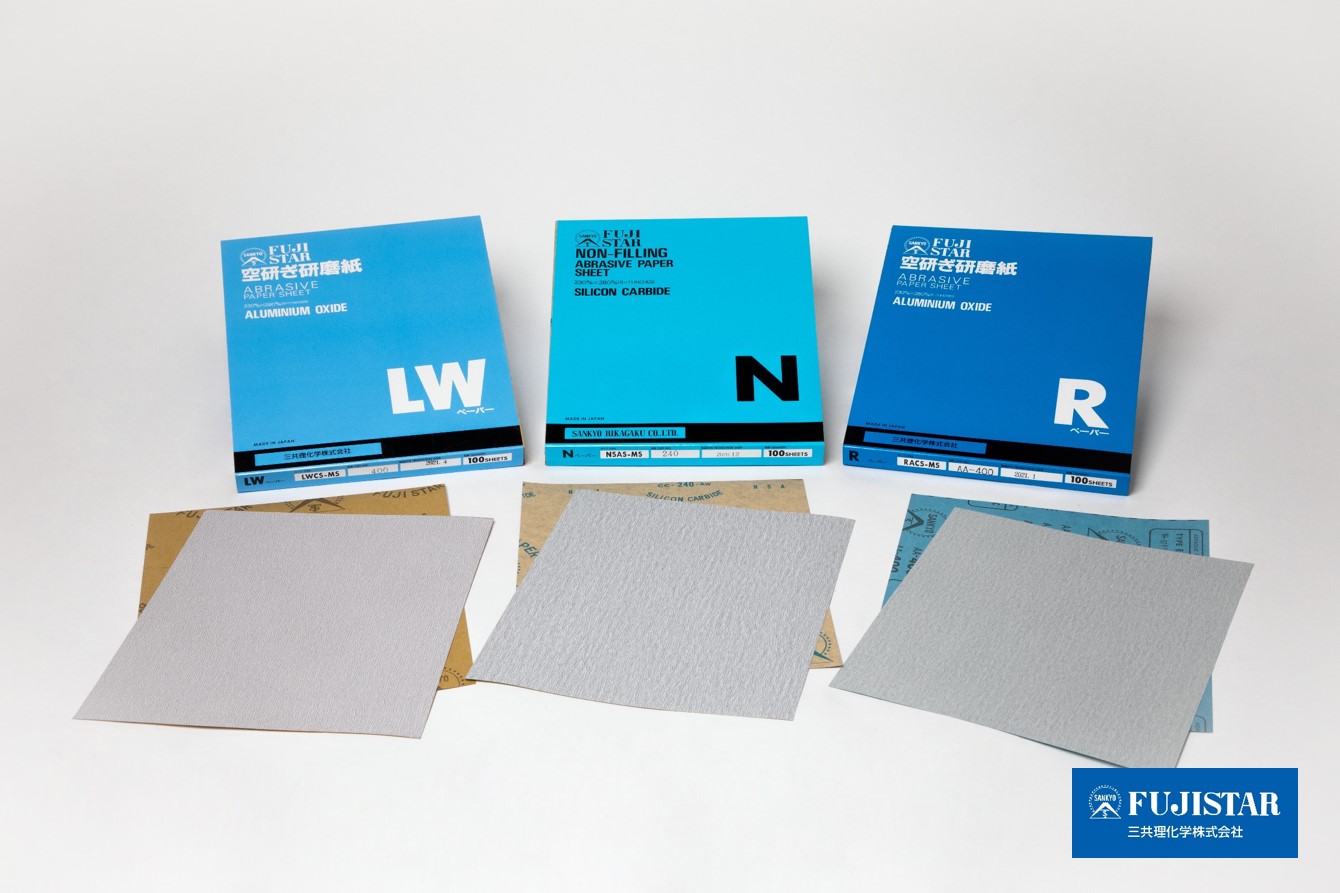
Polish the dry diatomaceous earth bath mat with #320 to #400 dry abrasive paper cut with scissors to an appropriate size.
It can be polished with a coarser grit, but if you apply up to around #400, it will have a better feel.
The secret to success is to finish the final product to #400.
After polishing is complete, remove the dust from the grinding.
If the diatomaceous earth bath mat has a pattern, a brush can be used to efficiently remove powder from the grooves.
After removing the powder, the surface is quickly wiped with a dry rag to complete the process.
Diatomaceous earth bath mats are eco-friendly products that can be dried and reused.
In these days of overflowing things, it is wonderful to use one's favorite things carefully for a long time while maintaining them.
4. How to clean with abrasives - Let's clean tanned old books!
【degree of difficulty★★★★☆】
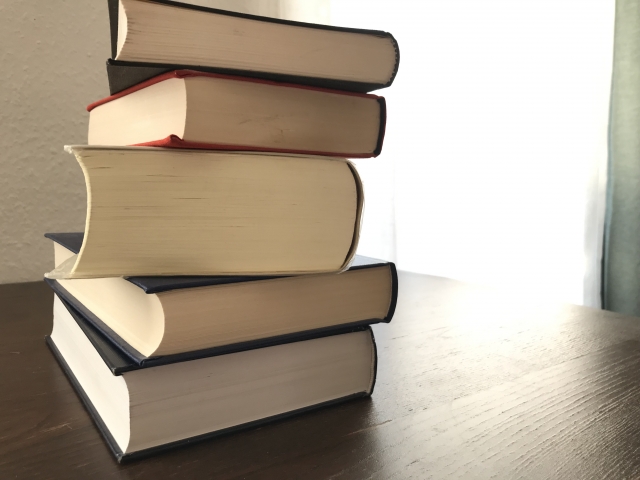
Old paperbacks and comic books left on the bookshelf, the small edges of which have become discolored from the sun.
Yellowing due to sunburn makes it look old and not so good in appearance.
In such cases, #240 to #320 blank abrasive paper will definitely be of great use.
~What to prepare~
・Dry abrasive paper #320 or #240
・Dry rag
Recommended Products: Dry abrasive paper (Sankyo Rikagaku Co.)
If you are not sure about waterless polishing, this is the product for you! Sankyo Rikagaku's polishing product "Kukarigiri Abrasive Paper

Apply the abrasive lightly to the thick part of the book and polish in a constant direction from top to bottom.
Careful attention should be paid to the grit size, as selecting coarse sandpaper will damage the book.
When polishing is finished, wipe it off lightly with a dry rag.
Although abrasives may seem unmatched for book maintenance, they are actually quite a major method in the used book market.
It looks like there is a polishing machine for cleaning the small end of the book.
5. How to clean with abrasives - Take care of leather shoes that show minor scratches!
【degree of difficulty★★★★★】
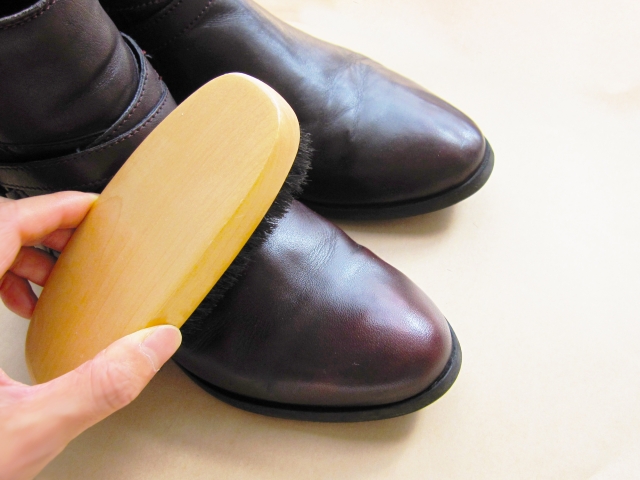
Leather shoes are long-lasting, but they require regular care.
How can I take care of minor scratches, scuffs, and stains that have adhered to the shoes while wearing them?
These scratches and stains can be cleaned by polishing with an abrasive.
~What to prepare~
・Waterproof abrasive paper #1000 or #800
・Dry rag
Recommended Products: Water Resistant Abrasive Paper (Sankyo Rikagaku Co.)
Sankyo Rikagaku's convenient polishing products "Water Resistant Abrasive Paper" for various polishing applications
Use #1000 to #800 abrasive after removing all dirt with a brush.
This is a more difficult process that requires subtle force and technique, but if done well, the original shine of the leather can be restored, so it is recommended.
The key point is to polish the surface in a light stroking motion to the minor scratches, as if you are trying to even out sharp scratches so that they are less noticeable.
Finish by applying leather shoe cream.
It is actually not suitable for daily maintenance as it does not repair the scratches, but only evens them out so that they are less noticeable.
However, it is worth a try when there are noticeable scratches.
6. Summary - Abrasive is a versatile product that can be used for cleaning.
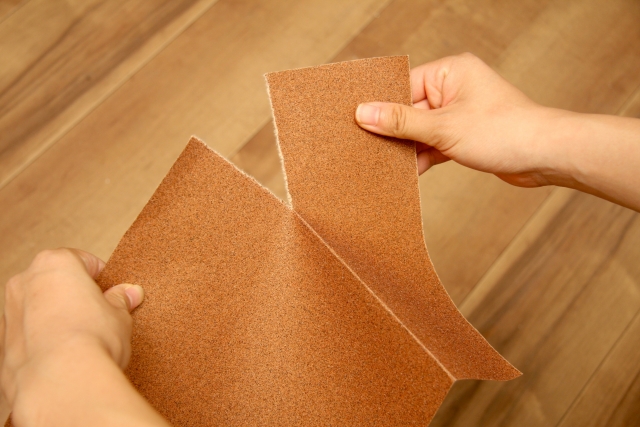
In this issue, we introduced some unexpected uses of abrasives.
You have seen that abrasives have many other uses beyond DIY.
However, due to the nature of abrasive products, the method introduced here only removes the surface, and it is inevitable that minute scratches will be left on the object.
We recommend that you try it once on a less noticeable area before polishing.
In addition, gloves and masks should be worn when grinding to prevent injury and inhalation of shavings.
Please bring gloves and masks with you when purchasing abrasives.
I know that some of you are of the school of thought that you don't do major cleaning because you do a little bit of cleaning every day,
During the long vacations of Obon and New Year's vacations, why not try to clean areas that are not usually cleaned as described in this article?
If you are interested in polishing, please feel free to contact Sankyo Rikagaku.
